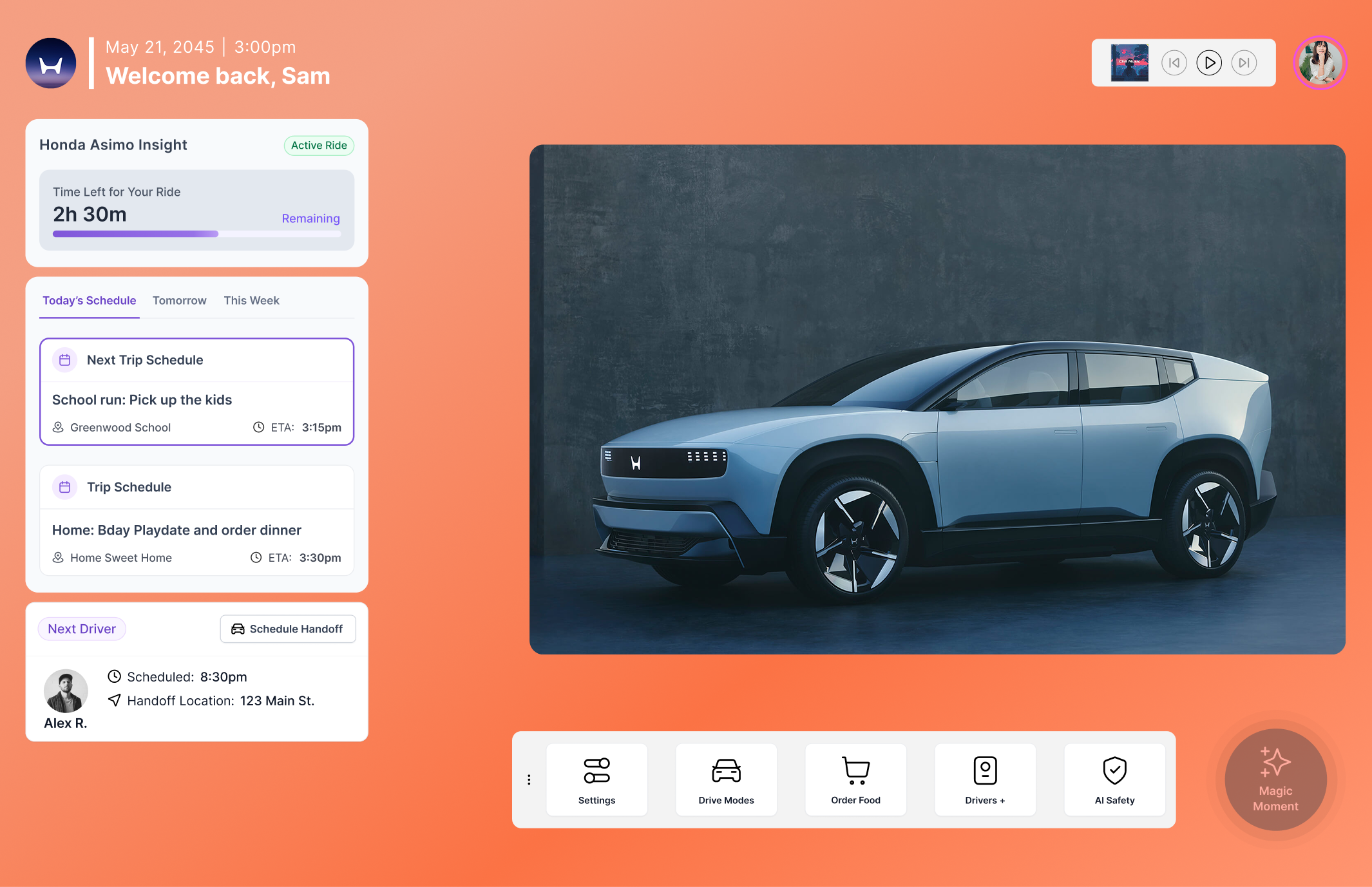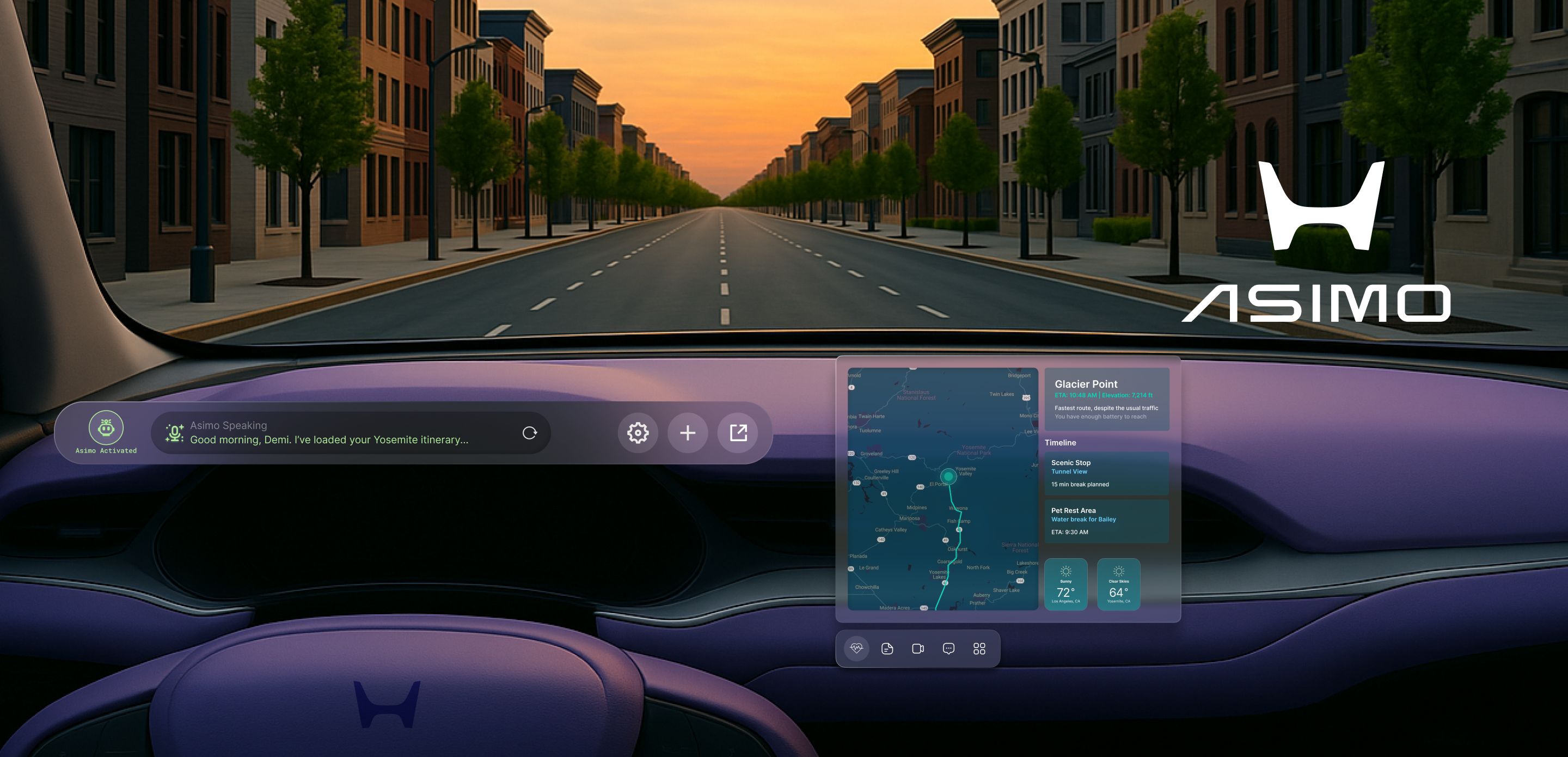
Designing the Future of Automotive UX
AI-powered Mixed-Reality In-Car Experience for Honda
Overview
"What is the future of automotive as transportation, experience, and extension of identity and lifestyle?"
In early 2025, I joined a 9-week design sprint hosted by Honda’s Innovation Team to explore the future of in-car experiences. As the UX Designer on a multidisciplinary team of a product strategist, VR prototyper, and video game designer, I helped create an AI-powered, mixed-reality prototype that combined emotional design, AR/VR, and automotive innovation.
Our goal was to reimagine how vehicles could evolve into immersive, identity-driven spaces that go beyond transportation.

Prototype scenario with Honda’s ASIMO AI detecting a new passenger and personalizing the in-car experience.
Problem
To design the experience for the next generation of drivers, we combined peer interviews and affinity mapping with industry reports and market data. We wanted to understand how Gen Z and late Millennials engage with driving, what motivates them, and how they envision their relationship with cars in the future.

Prototype scenario with Honda’s ASIMO AI detecting a new passenger and personalizing the in-car experience.
What we know about our audience:
Primary Users:
- Gen Z & Millennials in urban and suburban areas
- Tech-savvy, value personalization, and fluid lifestyles
- Expect brands to be adaptive, trustworthy, and socially conscious
Key Needs
- Emotional reassurance during stressful commutes
- Personalized, adaptive environments
- Seamless integration with digital life
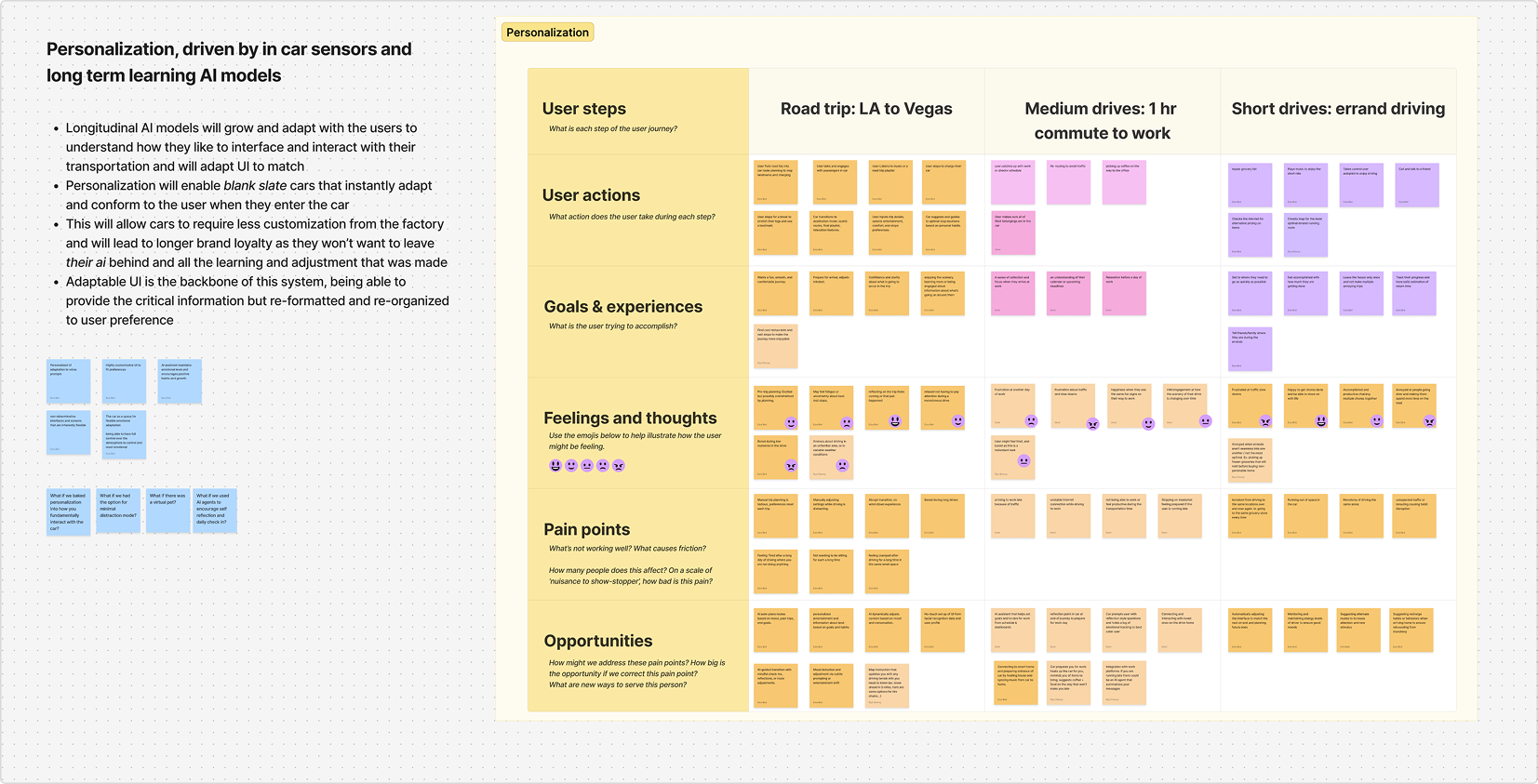
Journey mapping scenarios: Road Trip, 1-hr daily commute, Short Drives (For those who drive very little)
Scenarios mapped
Daily Commute:
Reducing stress and increasing focus before work.
Weekend trips
Curating playlists, scenic stops, and pet-friendly routes
Shared trips
Balancing personalization for multiple passengers

Storyboard of a persona on a daily commute with an AI personalized assistance.
Secondary Research Insights
Changing Relationship with Driving
25%
Gen Z get their license by 16
31%
Rely on friends for rides
Demand for Personalization & Connection
53%
Want interiors that adapt to preferences
72%
of passenger vehicles will be connected by 2026.
To explore this further, we:
- Conducted interviews and brainstorming sessions
- Analyzed competitive and futuristic automotive UX
- Created personas and mapped user identities
- User Journey mapping accross driving scenarios
UX Approach
We kicked off with deep brainstorming sessions around current in-car pain points and future possibilities. Our North Star was a human-centered and adaptive experience; A human-centered, emotionally adaptive in-vehicle experience that responds to identity, mood, and context. We did peer interviews and synthesized the insights using affinity mapping to uncover emerging patterns and emotional needs.
Key Ideas Explored:
AI powered personalization
Seats, playlists, driving modes, driver calendar, and cabin environment automatically adjust based on who’s detected in the car.
Smart Morning Routines
The vehicle helps users manage their day by placing coffee orders, sending emails, and offering calendar updates.
Magic Moment
Asimo OS senses stress and offers calming interventions like guided breathing through Zen Mode or reflective journaling.

When the driver is on Autonomous Mode, "Magic Moment" is activated and Asimo AI avatar is activated.
We reimagined ASIMO as a friendly, intelligent in-car companion who could guide and interact with users throughout their journey.
From concept to interface, I sketched, designed, and prototyped the UI, integrating features that aligned with our core themes.
- Built a mid-fi prototype in Figma, paired with a 3D Spline dashboard to simulate interaction
- User personas focused on millennial pet owners and solo travelers
- Journey mapping for long road trips with emotional pain points
Key UX themes: trust, adaptability, emotional connection, and minimal distraction

Sketches and brainstorming ideas for the features and in-car experiences

Asimo AI detects incoming drivers and passengers then loads up their profile to personalized their experiences.
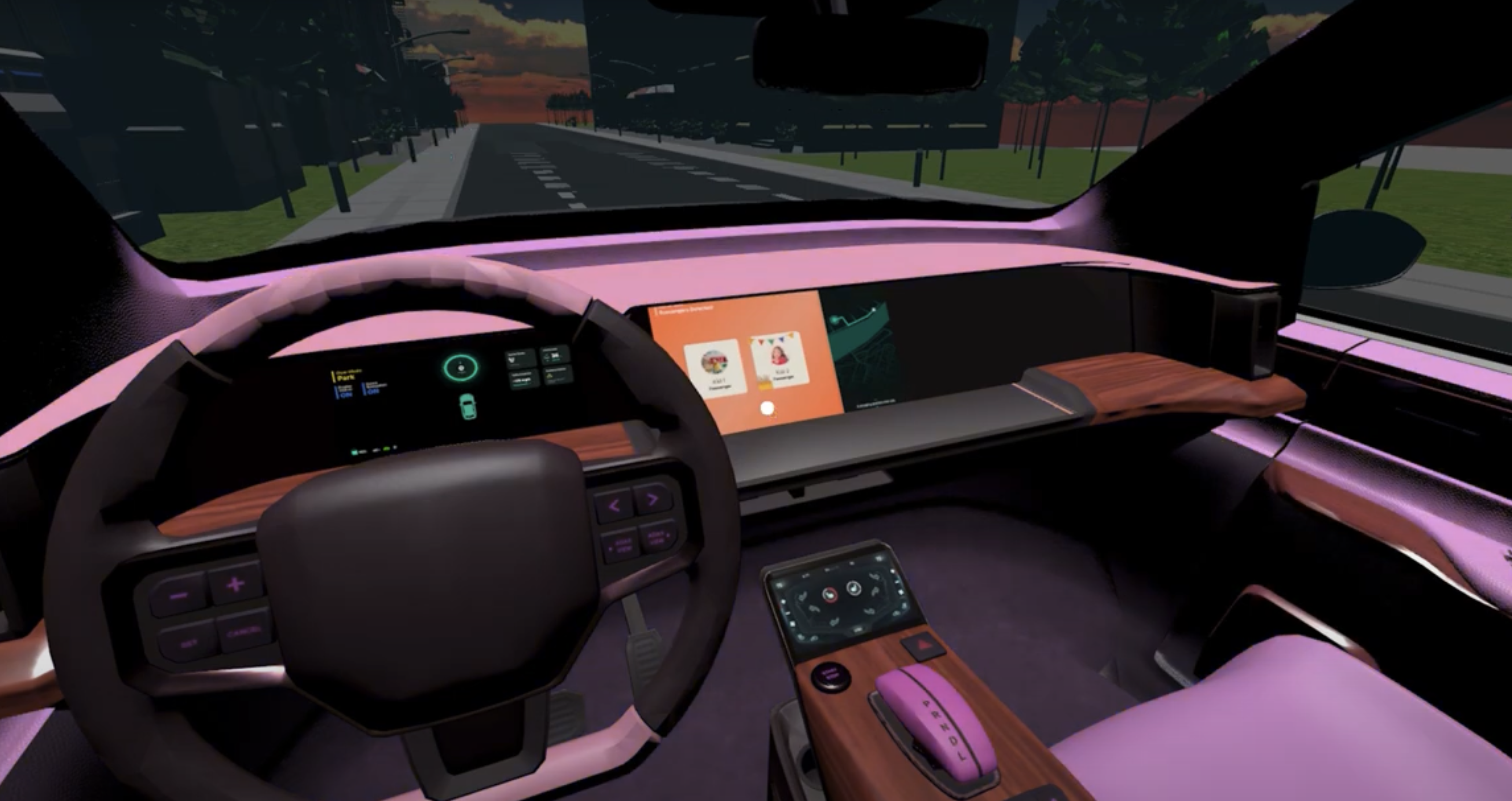
VR prototype showcases the features for Asimo AI.
Impact
Our concept positioned mobility as more than just transportation. It became a platform for building meaningful emotional connections between users and their vehicles. Inspired by Honda’s iconic ASIMO AI, we envisioned a car that behaves not only as a vehicle but as a trustworthy companion.
This future-focused concept strongly resonated with Honda stakeholders as both an emotionally rich brand extension and a glimpse into next-generation customer experience. By integrating emotionally adaptive features like personalized comfort zones and spatial AR interfaces, the project offered Honda a compelling way to strengthen brand relevance, particularly among Gen-Z and late Millennial drivers.
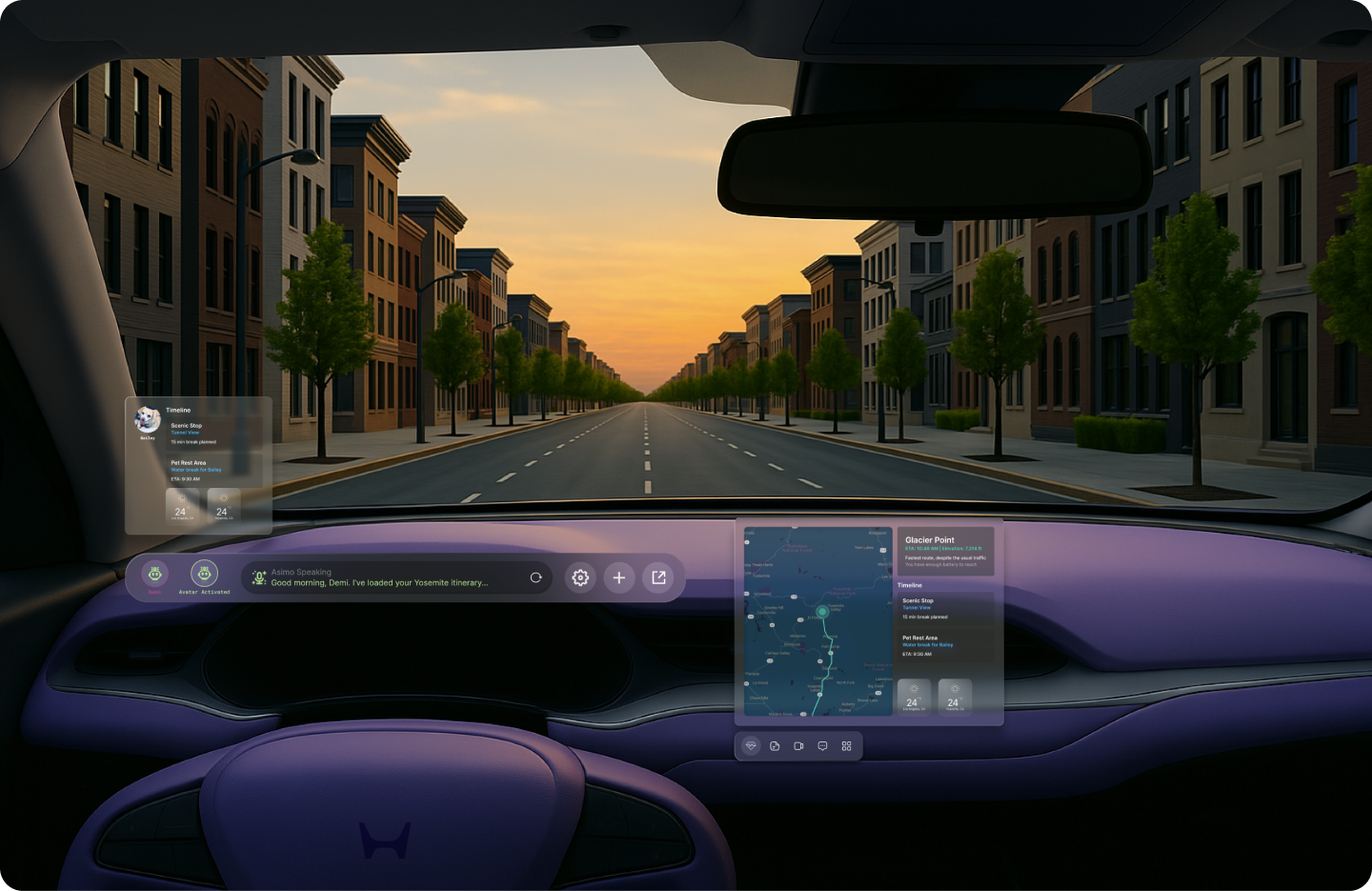
Takeaways
This project taught me that UX design isn’t limited to screens. It’s about crafting emotionally intelligent, full-sensory experiences. I learned that vehicles can become personal extensions of identity and that strong collaboration is key to navigating ambiguity and team misalignment.
If I were to do it again, I would focus earlier on clarifying system-user interactions, data permissions, and AI transparency.
Throughout the process, I strengthened my skills in rapid prototyping, environmental UX, and cross-functional communication during fast-paced and high-ambiguity sprints.




.jpg)
